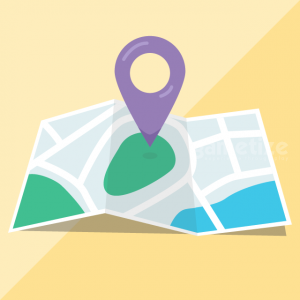[GUEST POST] How Gamification is Streamlining the Global Supply Chain


Consumer-Care and the Supply Chain
 Financial services are among the many industries using gamification to engage their consumers and affect the global supply chain. Fintech News Singapore notes how Britain’s Barclays bank is one of the best examples as they started gamification in 2010—way ahead of everybody else. They released an online game where users learnt to manage their money through an interactive city backdrop. This gave them a better understanding of how their money contributed to the global supply chain.
Financial services are among the many industries using gamification to engage their consumers and affect the global supply chain. Fintech News Singapore notes how Britain’s Barclays bank is one of the best examples as they started gamification in 2010—way ahead of everybody else. They released an online game where users learnt to manage their money through an interactive city backdrop. This gave them a better understanding of how their money contributed to the global supply chain.
When it comes to retail, Canadian Tire is a fitting example. They sell a wide range of automotive, sports, and leisure and home products. They launched a mobile app in 2015, which combines secure mobile payments, special offers, and rewards with an interactive gaming experience. This created a stronger connection with their customers.
Employee Engagement
 Verizon’s Vice President of Sales for EMEA, Derek Bryan stated that the UK falls short when it comes to worker productivity compared to its European counterparts. In fact, its annual growth in productivity has plummeted from 2.3% to 0.4%. Gamifying the employee reward system helps in keeping them goal-oriented and motivated. Getting access to precise data-fed insights in real-time allows workers to see the bad habits they might have developed and how to improve them. Bryan went on to say, that the scores help eradicate bad behavior without requiring heavy investments from the employer.
Verizon’s Vice President of Sales for EMEA, Derek Bryan stated that the UK falls short when it comes to worker productivity compared to its European counterparts. In fact, its annual growth in productivity has plummeted from 2.3% to 0.4%. Gamifying the employee reward system helps in keeping them goal-oriented and motivated. Getting access to precise data-fed insights in real-time allows workers to see the bad habits they might have developed and how to improve them. Bryan went on to say, that the scores help eradicate bad behavior without requiring heavy investments from the employer.
For UK fleet companies, gamification alters driver behavior by showing them pertinent information like their speed, breaking, and bad habits. ‘The Gamification of Fleet Safety’ by Verizon Connect UK explains how gamification can help change a person’s mindset and get drivers excited about hitting safer driving targets. It empowers drivers to take responsibility for their own actions while at the same time creating a fun and competitive working environment. As fleet drivers are a key part of the global supply chain it pays to keep them engaged and performing well.
Transportation System
 At the moment, peak-hour congestion and peak loading are the most pressing concerns for the supply chain. Traffic congestion often costs companies money due to delayed deliveries. The Conversation details that gamifying the transport system encourages thousands of residents to use alternative ways of reaching their destinations, which in turn frees up the roads. In Australia, they have a tailored program that encourages everyone to walk or use sustainable travel modes. Those who adjust their behavior can win points, which they can convert to cash or rewards.
At the moment, peak-hour congestion and peak loading are the most pressing concerns for the supply chain. Traffic congestion often costs companies money due to delayed deliveries. The Conversation details that gamifying the transport system encourages thousands of residents to use alternative ways of reaching their destinations, which in turn frees up the roads. In Australia, they have a tailored program that encourages everyone to walk or use sustainable travel modes. Those who adjust their behavior can win points, which they can convert to cash or rewards.
Gamified Education
 As the world constantly evolves so does the supply chain, which is why workers need to be educated on different areas, such as risk management. Gamification is an effective way to train workers. A simple game like ‘The Chronicle of Michael and Friends’ can educate workers and “emphasize importance of subject matter” by creating different scenarios that allow players to react to crisis situations. With health and safety a key feature of the global supply chain, this is an effective way to make sure employees are educated on the proper procedures.
As the world constantly evolves so does the supply chain, which is why workers need to be educated on different areas, such as risk management. Gamification is an effective way to train workers. A simple game like ‘The Chronicle of Michael and Friends’ can educate workers and “emphasize importance of subject matter” by creating different scenarios that allow players to react to crisis situations. With health and safety a key feature of the global supply chain, this is an effective way to make sure employees are educated on the proper procedures.
Article written by Casey Foster, exclusively for Gametize
Casey Foster is a tech writer who follows global trends. She is particularly interested in how companies and institutions have adapted to the latest technologies in order to improve the supply chain. She hopes her articles will provide detailed insight into how the world is moving forward. In her free time she loves to hike.
